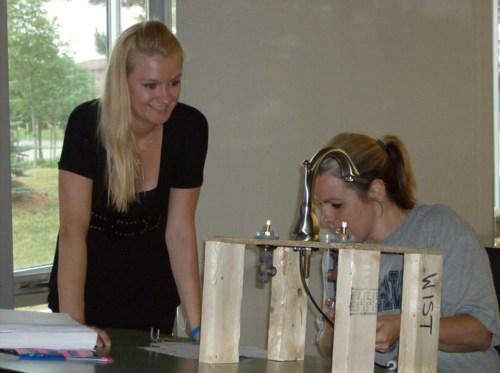How to Do Rough-In Plumbing

Washroom plumbing includes adding clean water lines, sewer pipes, toilets, sinks, tubs and many other components. Most of these elements are fed both hot and cold water through pipes that spread out towards every fixture in the bathroom. Rough in plumbing means putting lines for all these fixtures and get it ready for a future bathroom. Doing rough-in plumbing requires some plumbing skills and a few plumbing tools.
Instructions
-
1
A large portion of the work in rough-in plumbing will be done on paper or in a computer software. First decide on the number of washroom fixtures you require and their respective positions. Then prepare a blueprint of the water lining in the bathroom and print it out on a piece of paper. Locate the nearest source of water as well as the sewage water and connect them with the washroom main pipes in the blueprint.
-
2
It will give a rough idea of the pipe lining as the exact location of fixture will depend on a number of factors. For example, the size of the shower or the size of the commode will be one of the factors in the location of pipe joints.
-
3
Research on the type of pipes available in your local market and decide which one will be suitable for your requirements. Remember, it is often best to go for the highest quality water pipes, as they eliminate the risks of water leakage, which in turn keeps the walls and floors safe from moisture marks.
-
4
Cut the pipe into required sizes and fit them with the help of a threaded adapter or connector. Install the drainage piping first, then place a T-Connector to the main sewer stack where the flush will be installed.
-
5
Use a large pipe in your drainage system to save yourself from clogging issues later. After placing the pipes, use Portland cement to hold the pipes in their place. Follow the instructions given with the PVC pipes on how to make their joints leakage proof.
-
6
Now install the fresh water pipes in the bathroom. Use different colour pipes to differentiate between the hot and cold water tubes. Wrap an insulating sheet around the hot water pipes to keep the water warm.
-
7
Use 90 degree elbow joints at the termination of the pipes, turning them in the vertical direction. Place the elbow joint in the horizontal fashion to make an opening for the water shower.







